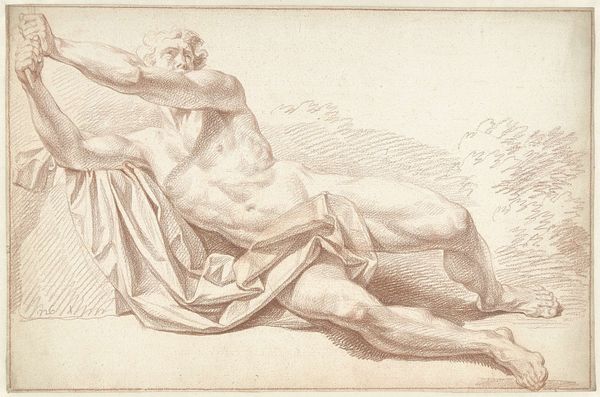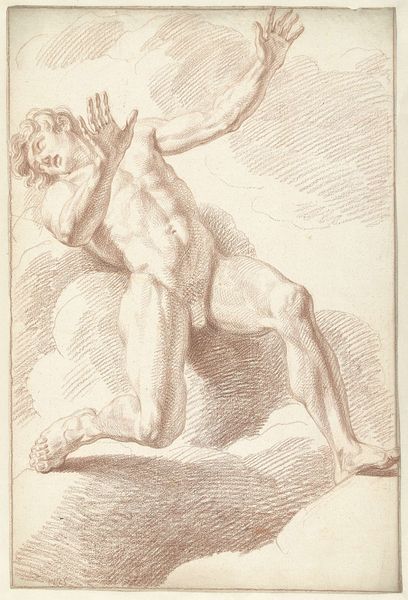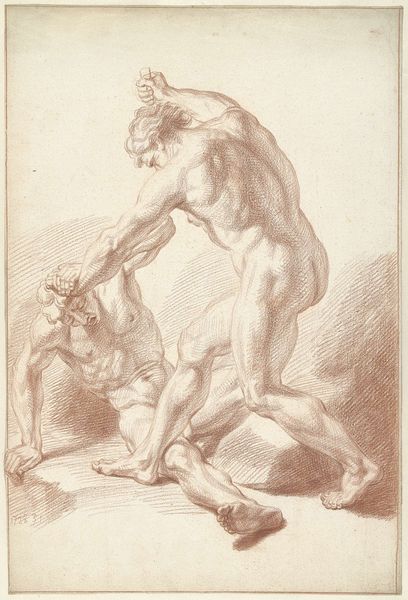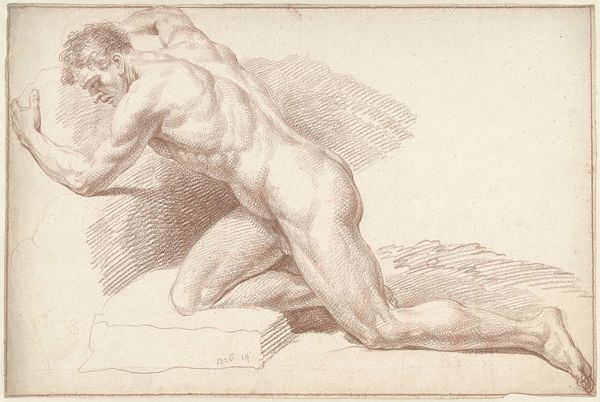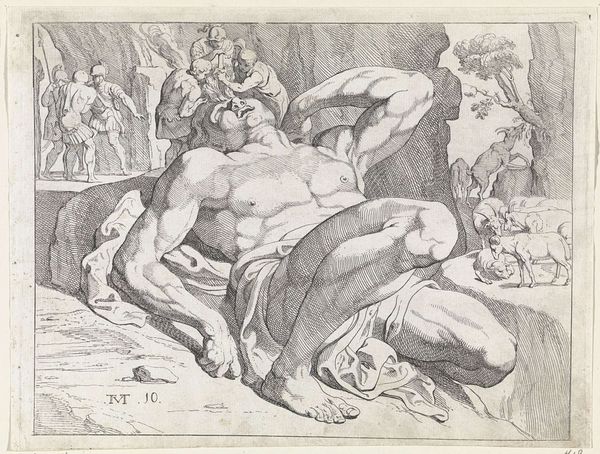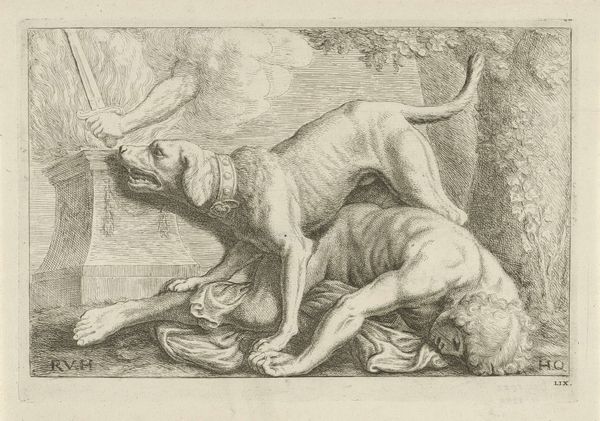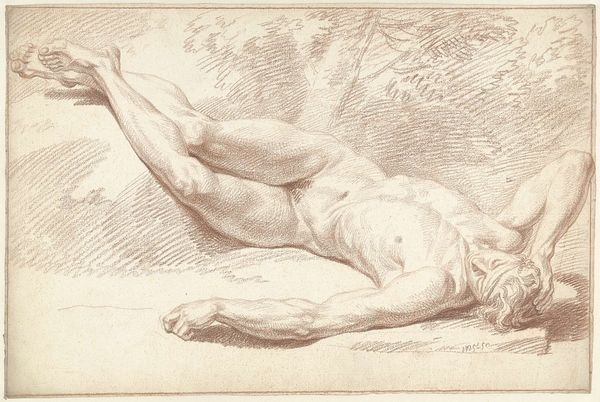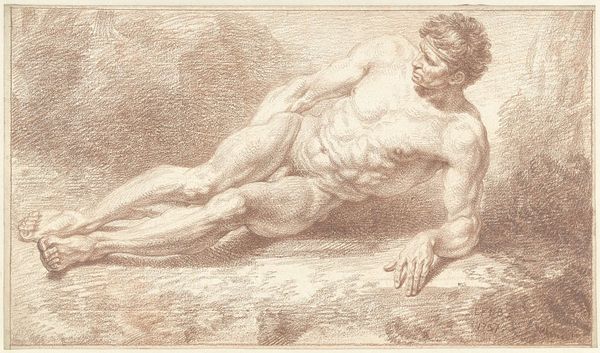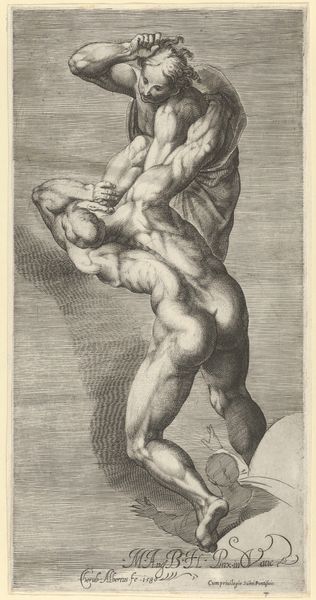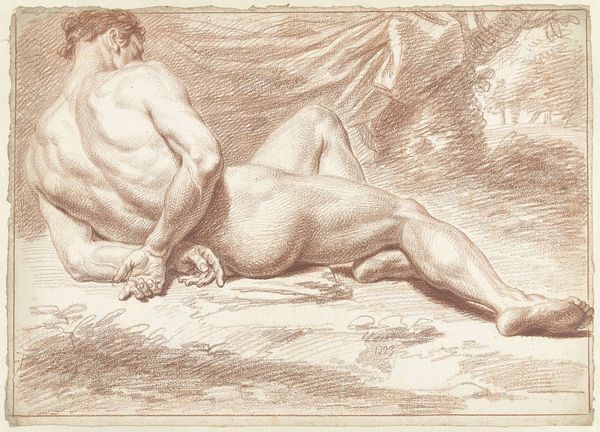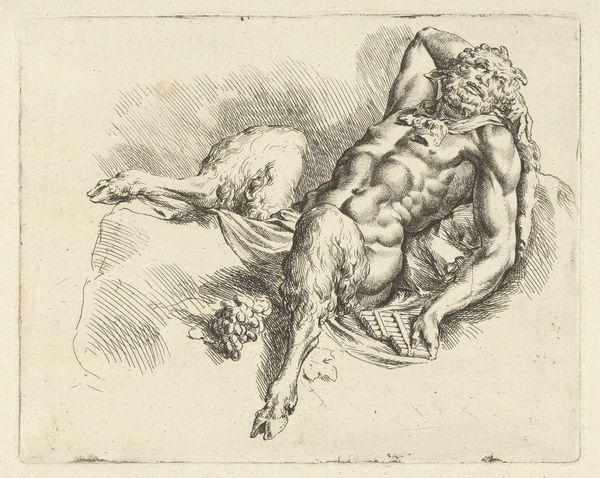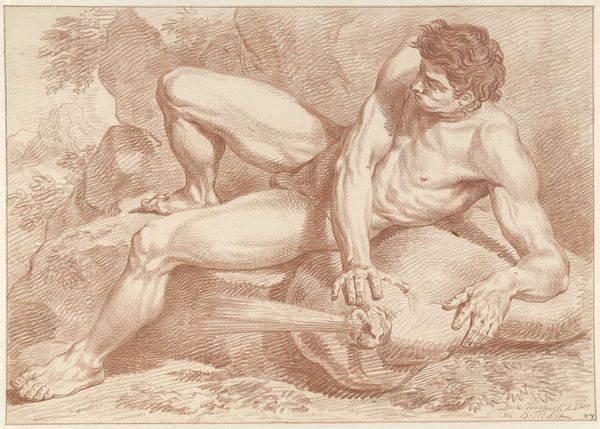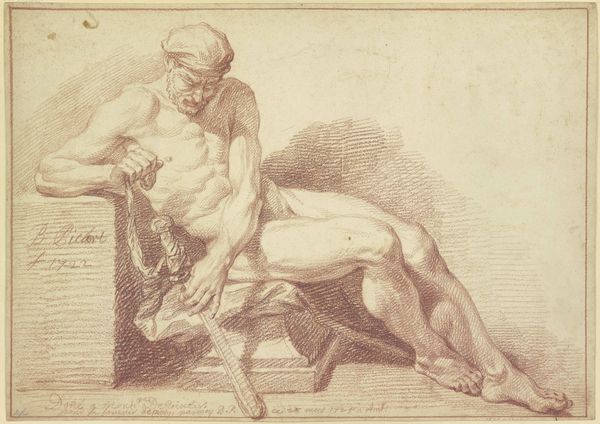
Mannelijk naakt, liggend op de buik, verkort weergegeven 1726
0:00
0:00
louisfabritiusdubourg
Rijksmuseum
drawing, pencil
#
drawing
#
baroque
#
charcoal drawing
#
figuration
#
pencil drawing
#
pencil
#
nude
Dimensions: height 350 mm, width 490 mm
Copyright: Rijks Museum: Open Domain
Louis Fabritius Dubourg made this red chalk drawing of a male nude, lying on his stomach, sometime in the 18th century. It’s a study of the human form in a moment of repose, but what does it tell us about the place of the nude in artistic training at that time? The art academies that developed across Europe from the 17th century onwards placed the life drawing class at the center of their curriculum. Students would spend hours copying the live model to learn about anatomy, proportion, and the idealization of the human form. The poses they struck were often based on classical sculpture, so studying the nude was also a way of linking the present to the artistic achievements of the past. Drawings like this are a window onto the social and institutional practices that shaped art in the 1700s. We can consult the archives of the art academies to understand the rules of the life class, and what they reveal about attitudes toward the body, gender, and social status. In this way, art history isn’t just about the artwork itself, but about the world that made it possible.
Comments
No comments
Be the first to comment and join the conversation on the ultimate creative platform.
